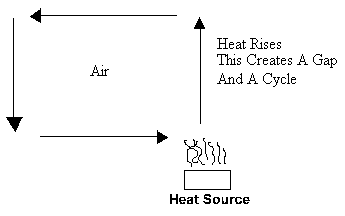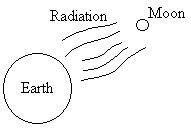|
The three main types of heat transfer are conduction, convection, and radiation. Each of these has its own properties and ways of transferring heat, and each have their own practical uses. One of the types of heat transfer is conduction. Conduction is the most basic form of heat transfer. Conduction occurs when a form of energy touches an object. The energy then starts vibrating the particles of the object. The vibrations, as heat energy, move from particle to particle down the object. Here is an example: imagine applying heat to the end of a copper rod. The end will heat up as the particles of copper vibrate. Their vibrations cause the particles a little futher on to vibrate too ... and so on down the rod, until the entire rod is hot.  The properties of conduction are: -The warmer particles are, the quicker they will vibrate. -Things with many particles (e.g. metals) conduct heat better than things of equal size with fewer particles (e.g. gases). The second way to transfer heat is by convection. Convection is when a group of fluid particles are heated and rise, creating a gap that must be filled by other particles – this creates another gap, which must be filled. This creates a cycle. This cycle is not only a way of keeping rooms warm, it is also the reason that we have wind and tornadoes.  The properties of convection are: - For convection to occur, fluid particles must be present. (ie: won't work in a vacuum) - Liquids and gases are poor conductors, but they support convection well. The third way to transfer heat is by radiation. Radiation is the transfer of energy in a wave-like form. Heat transfer by radiation is called "radiant energy." There are many different frequencies of radiation – the lowest is radio waves, the highest is gamma rays.  Radiant energy does not need anything to travel through. The properties of radiant energy" are: - Travels at 300,000 km/s in a vacuum. - Is reflected by shiny objects - Is absorbed by dark objects (causing those particles to gain energy). - Travels in straight lines These are three main types of heat transfer, each with its unique properties. Conduction is part of our everyday lives ... one of its main uses is cooking. Convection is a way of heating buildings, but it is also the reason we have wind. From cooking to helping to treat cancer, radiation has many uses. Understanding and using heat transfer has made our lives easier. |